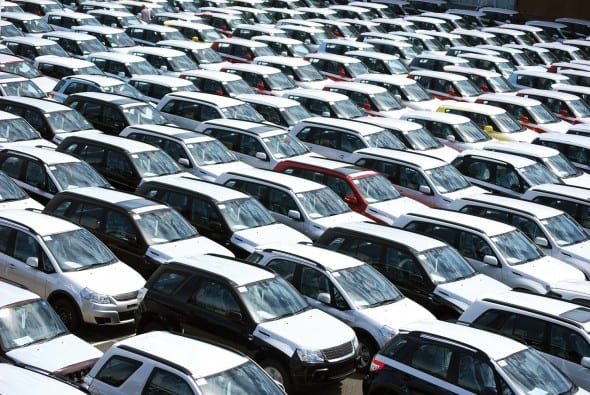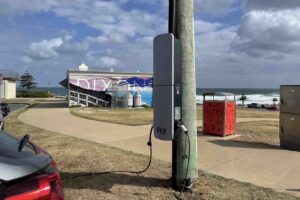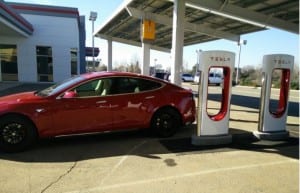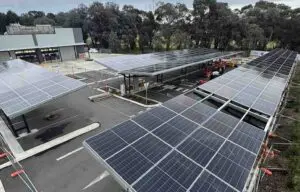The response to our article on Monday “Tesla Motor’s Elon Musk just killed the petrol car” was as fascinating as it was overwhelming. It is on track to be the most read story on our web-site to date.
The response was fascinating because it came from a mixture of those prepared to imagine the future, and read the signs of change, and those focused on short-term issues – be it meeting production schedules, reducing battery costs, or the immediate future of the Tesla share price.
Then there were those who simply didn’t want to know. The oil industry is one of them. It is making predictions, and seeking capital, as though the EV didn’t exist. The nuclear industry also wishes it wasn’t so. “This is bullish*t”, tweeted one of the most prominent nuclear advocates, still clinging to the old centralised energy model.
So we thought it would be useful to explain more about how it is that Musk has killed the petrol car. And for that we went back to Stanford University’s Tony Seba, the academic who predicts that fossil fuels, coal and oil in particular, will be redundant by 2030.
Seba tells RenewEconomy that the latest developments at Tesla, with the huge response to the sneak preview of its new Model 3, and the rollout over at General Motors of the Chevy Bolt, confirm his predictions. They may in fact accelerate them.
Seba’s message is not one that sits comfortably with incumbent industries, the auto and oil sectors in particular. He thinks that new internal combustion engine cars will not be on sale by 2025. Anywhere in the world. And there may not be many internal combustion engine buses, trucks, and tractors either.
This graph below is the key to the story. It comes from Seba’s Clean Disruption book released 18 months ago, and is a forecast of the declining cost of electric vehicles as battery storage costs plummet. The release of the Chevy Bolt and the Tesla Model 3, both at around $US35,000, put developments ahead of his curve.

It means that within a few years, high-performance EVs will cost less than the average car in the US. Within five years they will be competing with low-cost Buicks.
“For the past 100 years, the auto industry has told us that if you want high performance you have to pay big bucks,” Seba says. “So when you get a car with a better performance than a Porsche and a cheaper price than a Buick, that’s the end for both Porsche and Buick.”
But that’s not the only point. Seba argues that electric vehicles will cost 10 times less than internal combustion engines to charge. Electrons are easier to move than petrol and diesel. Solar powered charging stations will deliver refills at zero marginal cost.
Maintenance will also be significantly cheaper. An international combustion engine has more than 2,000 moving parts. An electric vehicle has less than 20 moving parts. It will have negligible maintenance costs.
Seba explains more: “The Internal Combustion Engine is 17-21 per cent efficient while the electric motor is 90-95 per cent efficient. The EV is 5 times more energy efficient than the ICE car.
“Combine that with the fact that it’s cheaper to transmit electrons (electricity) than atoms (gasoline or diesel) and you get that energy costs/mile are 10 times cheaper for EVs.
“This number of course changes according to local conditions (as you know electricity vs petrol costs vary widely depending on taxes, transmission costs, subsidies, industry protection, etc.), but I haven’t seen a market where energy cost per mile for EVs are less than 5 times cheaper than energy costs for ICE cars.”
Seba worked his predictions on a 200-mile range (320kms) EV costing $US30,000 by 2020, cheaper than the ICE alternative and with huge fuel and maintenance savings.
“Assuming both these cars (GM Bolt and Tesla Model 3) do in fact go to market 2017 and the industry catches up to them by 2018, it fits my forecast perfectly,” Seba says.
“This means that 2020 would be the tipping point for the disruption, the point at which it would make no financial sense to purchase an ICE vehicle for the average vehicle buyer. Follow the EV cost curve and by 2025 all new vehicles will be electric.
“Interestingly, the median new ICE car in the US is now $US33,000 (compared to his forecast of $US31,000) and the EV cost curve may be accelerating beyond the 16 per cent per year curve that I predicted.
“So, in fact, the end of the ICE vehicle era may happen faster than my 2025 prediction. By the way, this is not just the end of the ICE car era. My prediction is that by 2025 all new vehicles will be electric: cars, SUVs, trucks, buses, tractors, anything that moves on the ground with wheels.
“When digital cameras disrupted film cameras, it didn’t just happen with low-end cameras,” Seba says. “It happened with all cameras. It’s the same dynamics with vehicles.”
These predictions do two things: they validate targets, such as those by India’s roads minister for all cars to be electric by 2030; and they make policies such as the Dutch ban on internal combustion engines from 2025 appear a little redundant.
And here it is worth reinforcing a point we tried to make yesterday. These predictions do not lie in the success or otherwise of Tesla, or the ability of Musk to meet production targets. And they also do not assume that individual ownership of vehicles will be as paramount as it now is.
Musk, you see, is not alone, he is just blazing a trail. FoxConn, the makers of the Apple laptop, predicts it will be making EVs at a price of $US15,000. Ford, Seba notes, has announced plans to invest $US4.5 billion in electric vehicles, not necessarily to capture the lion’s share of the market in units sold, but to become a “mobility company”.
GM is also investing in the “mobility services” business, snapping up interests in companies investing in lifts and autonomous cars. Google and Apple are investing heavily in similar technologies.
Tesla also has a “master plan”, as we noted on Monday. This does not centre around selling units so much as miles or kilometres travelled. Morgan Stanley says Tesla’s future will rely not on EV deliveries, but the network of service and free charging that is “critical to delivering mobility service-based revenue in the future.”
Seba says a similar transition is happening in the electricity supply industry, where the plunging cost of solar and of battery storage is changing the rules of the game from a centralised to a distributed model, also based around a “zero marginal cost of production”, rather than the increasing marginal cost on which the fossil fuel industry relied.
There are three reasons for this change in focus in the auto industry, Seba says. Cars are moving from internal combustion engines to electric, they are being driven by computers rather than people, and they will be shared rather than owned.
“Change comes from the outside,” Seba says, referring to the photo, computer, media and telco industries. “ECs are computers on wheels. Companies offer free charging. We are moving to zero marginal cost.
“You can power hour house with your car. If every car in Norway is a full EV, they will be able to store one half of the daily electricity demand.”
And there is one other things that may change too. The use and need for car parks. If Seba is right, and car sharing dominates over individual ownership, then car fleets will be significantly smaller and car usage will switch from 10 per cent usage and 90 per cent parking, to 90 per cent usage and 10 per cent parking.
That’s a lot of car parks lying under-utilised. It may turns out that cheaper real estate is on the way too.










